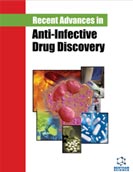
Abstract
Background: Acinetobacter baumannii is an opportunistic hospital pathogen with high antibiotic resistance, and the ability to produce biofilm. This study aimed to investigate epsA, ompA, and bap genes involved in biofilm formation in MDR and XDR clinical isolates of Acinetobacter baumannii in Khorramabad, Iran.
Methods: In this study, 79 A. baumannii isolates were collected from various samples of the patients admitted to tertiary hospitals in Khorramabad city, Iran, between January and August 2019. After performing the semi-quantitative evaluation of biofilm production by microtiter plate assay, screening of isolates carrying epsA, ompA, and bap genes was done by PCR method. Finally, statistical analyses were conducted using SPSS 22.
Results: Among 79 A. baumannii isolates, 52% XDR, 40% MDR, and 16% non-XDRMDR isolates were found to be biofilm producers. All XDR and 94% MDR isolates had ompA and epsA genes, and bap genes were detected among > 80% of these isolates. Moreover, the presence of biofilm-related genes and biofilm production among non-XDRMDR isolates were less than among resistant isolates (p≤ 0.01).
Conclusion: Based on the results, biofilm production and simultaneous presence of epsA, ompA, and bap genes among MDR, and XDR A. baumannii isolates have been found to be significantly more than non-XDR-MDR isolates.
Graphical Abstract
[http://dx.doi.org/10.3389/fcimb.2017.00055] [PMID: 28348979]
[http://dx.doi.org/10.2147/IDR.S166750] [PMID: 30174448]
[http://dx.doi.org/10.1186/1471-2164-15-1020] [PMID: 25422040]
[http://dx.doi.org/10.1080/1040841X.2019.1600472] [PMID: 31012772]
[http://dx.doi.org/10.3390/pathogens10030373] [PMID: 33808905]
[http://dx.doi.org/10.3390/microorganisms8060935] [PMID: 32575913]
[http://dx.doi.org/10.2147/IDR.S169894] [PMID: 30532562]
[http://dx.doi.org/10.3389/fmicb.2016.00483] [PMID: 27148178]
[http://dx.doi.org/10.3389/fmicb.2019.00132] [PMID: 30787915]
[http://dx.doi.org/10.1016/j.micpath.2011.09.004] [PMID: 21946278]
[http://dx.doi.org/10.5812/archcid.12914]
[http://dx.doi.org/10.9734/jpri/2021/v33i58A34099]
[http://dx.doi.org/10.3390/microorganisms9112384] [PMID: 34835509]
[http://dx.doi.org/10.2147/IDR.S332051] [PMID: 34531666]
[http://dx.doi.org/10.2174/1871526519666190517124314] [PMID: 31099322]
[http://dx.doi.org/10.47176/mjiri.33.3] [PMID: 31086782]
[http://dx.doi.org/10.1111/j.1469-0691.2011.03570.x] [PMID: 21793988]
[http://dx.doi.org/10.1021/jf0725629] [PMID: 18095647]
[http://dx.doi.org/10.1186/s12879-019-4272-0] [PMID: 31315572]
[http://dx.doi.org/10.1093/jac/dkx368] [PMID: 29069421]
[http://dx.doi.org/10.1007/s11033-021-06690-6] [PMID: 34460060]
[PMID: 28070537]
[PMID: 27845499]
[http://dx.doi.org/10.1111/j.1365-2958.2005.04892.x] [PMID: 16262787]
[http://dx.doi.org/10.1128/IAI.00096-09] [PMID: 19470746]





















